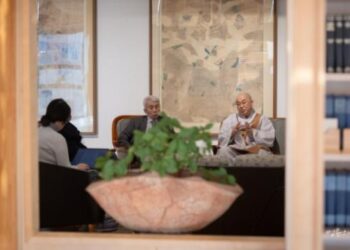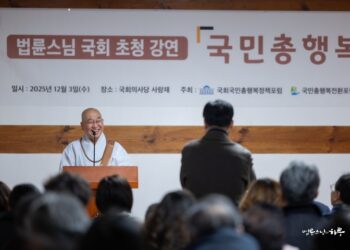Jul 3, 2025 – INEB Day 8, Visit to Jogye Order Headquarters, Discussion on Cooperation
Hello. Today is the 8th day of the INEB Study Tour. The INEB delegation visited the headquarters of the Jogye Order of Korean Buddhism in the morning and had discussions about future cooperation in the evening.

After completing morning practice and meditation, Sunim headed to the Jogye Order headquarters located in Jongno-gu, Seoul, at 8 AM with the INEB participant monks. Through visits to Bongamsa Temple, Silsangsa Temple, and Jungto Society, and through discussions with each other, they were able to learn about the diverse aspects within Korean Buddhism. Today, they visited the headquarters of the Jogye Order, which represents Korean Buddhism, to hear about the Jogye Order’s future vision.
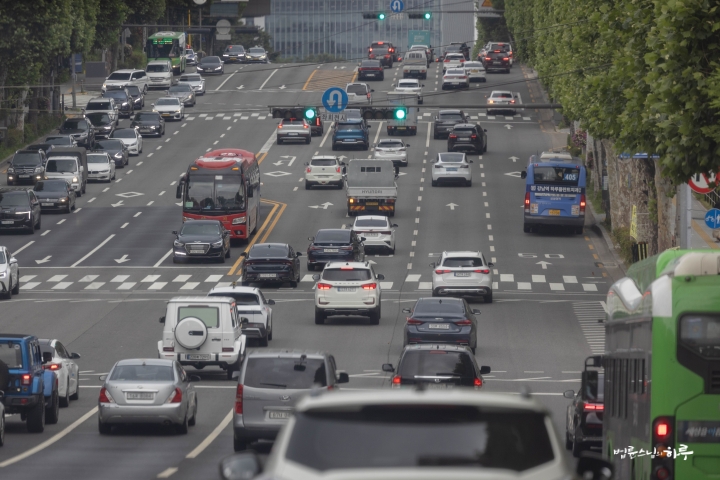
They arrived at Jogyesa Temple at 8:40 AM and toured the temple grounds. Sunim explained various parts of Jogyesa Temple.
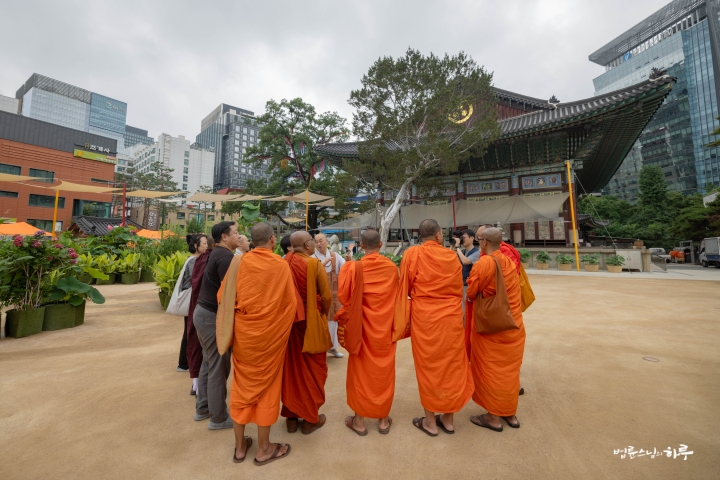
“This is Jogyesa Temple, where the headquarters of the Jogye Order, representing Korean Buddhism, is located. The Main Buddha Hall you see in front is currently the largest wooden building in Korea. In front of the Main Buddha Hall is an octagonal 10-story stone pagoda, which enshrines the Buddha’s relics donated by Venerable Dhammapala from Sri Lanka in 1914 and consecrated in 1930. At that time, Venerable Dhammapala gave three relics to Master Yongseong. One was enshrined here at Jogyesa, another was enshrined at Baegyangsa Temple in the southwest of the Korean Peninsula, and the remaining one was meant to be enshrined in the southeast, but a pagoda has not yet been built for it.”

They then paid respects at the Main Buddha Hall. After paying respects to the Three Buddha statues, everyone prayed together in the Theravada style.
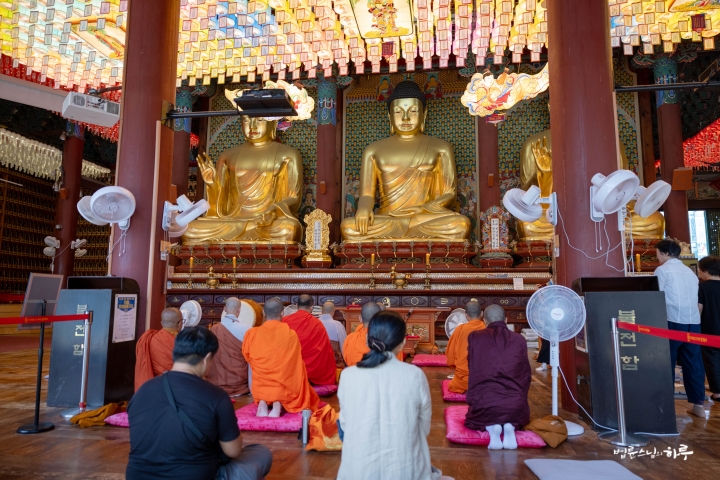
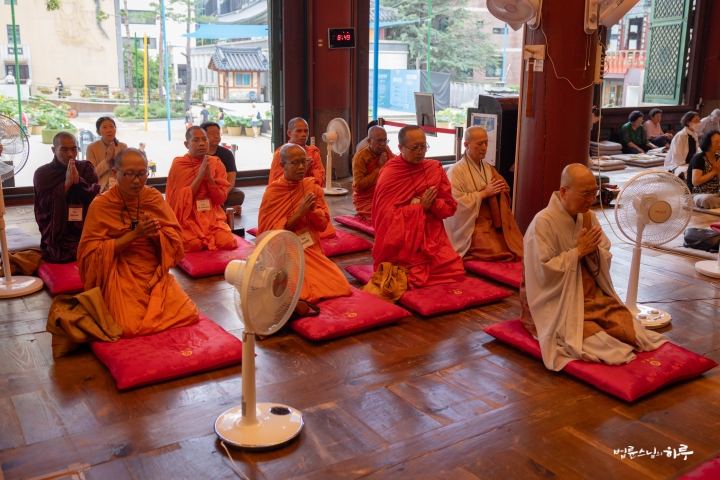
After leaving the Main Buddha Hall, they paid respects at the 10-story stone pagoda, viewed the Bell Pavilion, and headed to the Paradise Hall. After touring the interior of the Paradise Hall, Sunim explained.

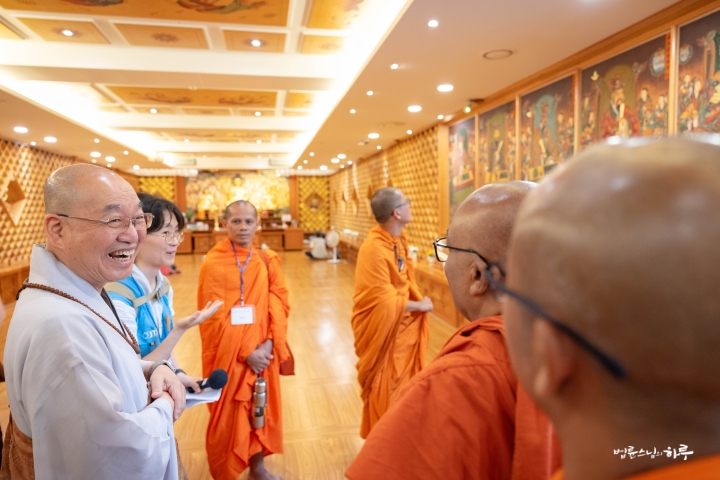
“This is the Paradise Hall where Amitabha Buddha is enshrined. In Mahayana Buddhism, the best place people go after death is believed to be the Pure Land where Amitabha Buddha resides. Therefore, memorial services for the deceased are held here. The person in that painting is King Yama. He is the one who judges whether to send the deceased to hell or to the Pure Land.” (laughter)
Lotus flowers were blooming throughout the temple grounds. The INEB participant monks took out their phones and took photos of each other.
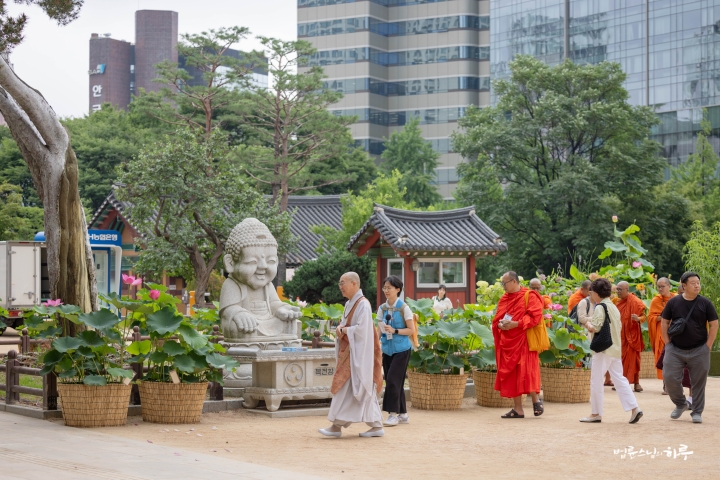
The Buddhist History and Culture Memorial Hall, where the headquarters is located, had recently caught fire and was under repair. So they decided to meet the President of the Jogye Order at the Temple Stay Promotion Center.
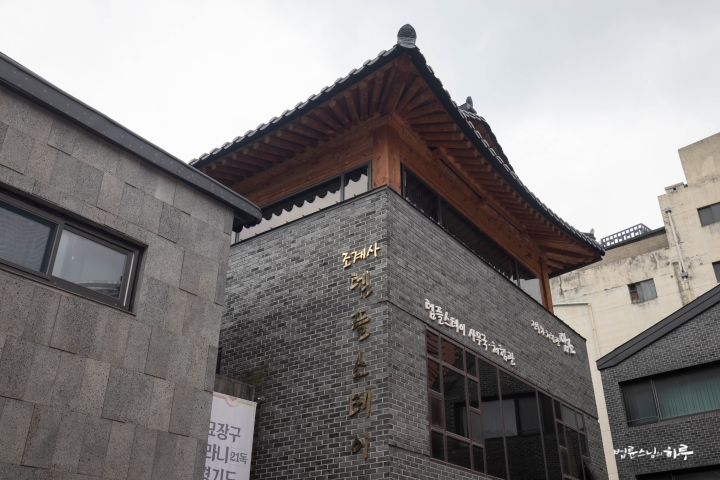
Upon arriving at the Temple Stay Promotion Center, Venerable Jinwoo, President of the Jogye Order, warmly welcomed the INEB participant monks.
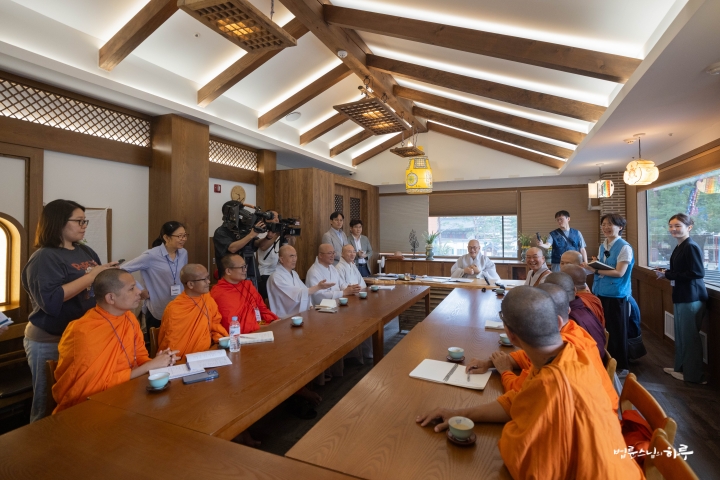
First, Sunim introduced the INEB participant monks and briefly shared their journey over the past week.
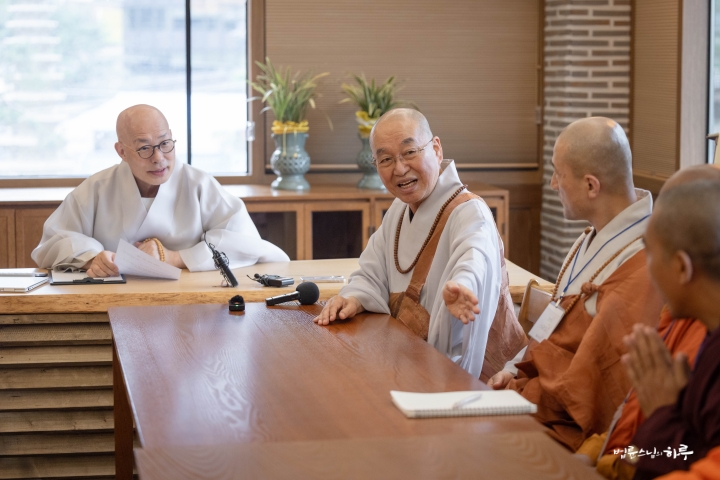
“This year, we revisited with those who had participated in the INEB Study Tour before. About 10 years have passed, and most of the participants who attended then are now in their 50s and have become middle-level leaders in their respective orders. During this visit, we went to Mungyeong to learn about the meditation hall operations at Bongamsa Temple, visited Jungto Retreat Center to observe how Jungto Society operates, and stayed a day at Silsangsa Temple to discuss how the temple cooperates with local residents. Tomorrow is the last day of our schedule.
This gathering was not simply a tour or observation, but a place to present and share experiences about education, practice, dharma propagation, and social engagement activities. Since those who participated before have become senior members after 10 years, we focused on discussions rather than tours, presenting our concerns and giving advice to each other. Because we face similar problems, we requested the headquarters not just to visit Jogyesa Temple, but to hear about the operational methods and vision of Korean Buddhist orders. So today, we will first listen to a presentation by the Director of Future Planning for an hour, and then have a Q&A session.”
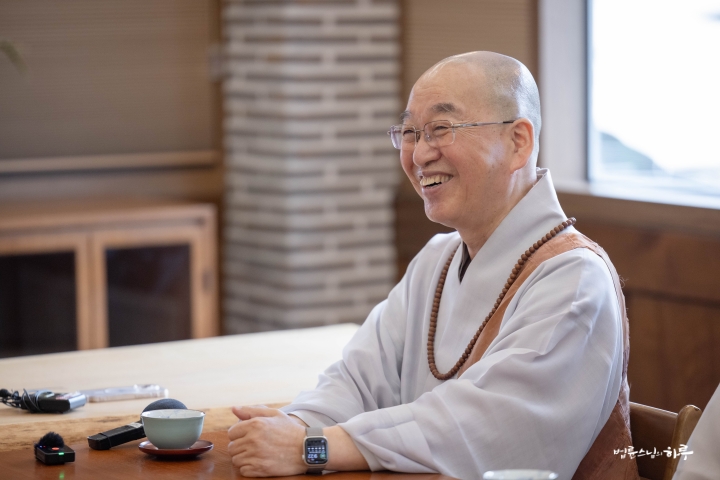
Next, Venerable Jinwoo, the Executive Chief of the Jogye Order, gave a speech for the INEB participant monks.
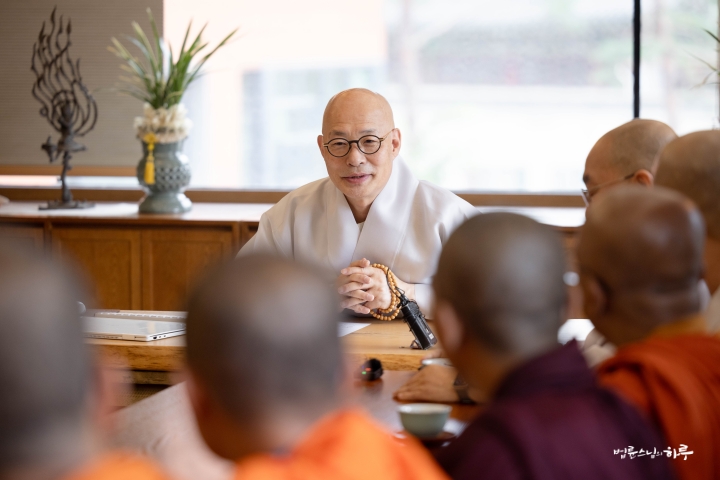
“Recently, a fire accident occurred at Jogyesa Temple, and we are temporarily evacuated. Nevertheless, I deeply appreciate all of you for visiting us.
As you well know, the purpose of Buddhism is to attain Buddhahood, to become a Buddha. Globally and historically, there is probably no religion that brings peace to the human mind as much as Buddhism does. In that sense, I believe all of humanity should know Buddhism. For this, we monks must convey the Buddha’s teachings well.
Although regions, races, and cultures may differ, the purpose of Buddhism is the same. I believe the monks gathered here today play the most important roles among all. It would be good if we could interact and communicate frequently, but realistically, this is not so easy. In the future, our Jogye Order will also seek ways to cooperate with you.”
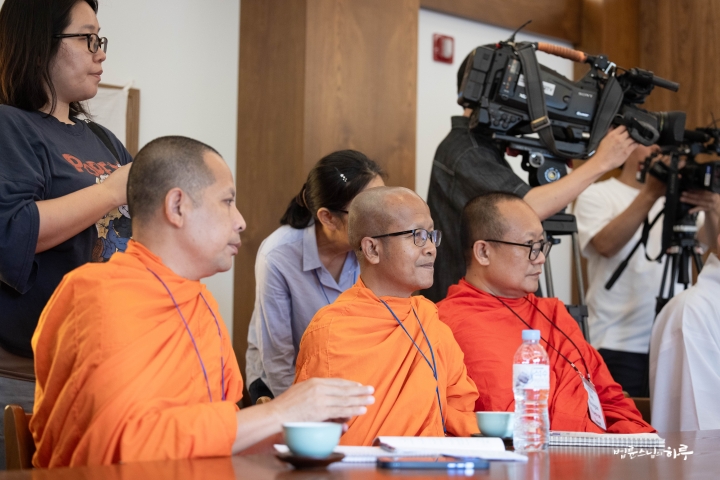
Some of the INEB participant monks also shared their impressions of visiting Jogyesa Temple this time. Venerable Dhammananda, the eldest among them, shared his thoughts.
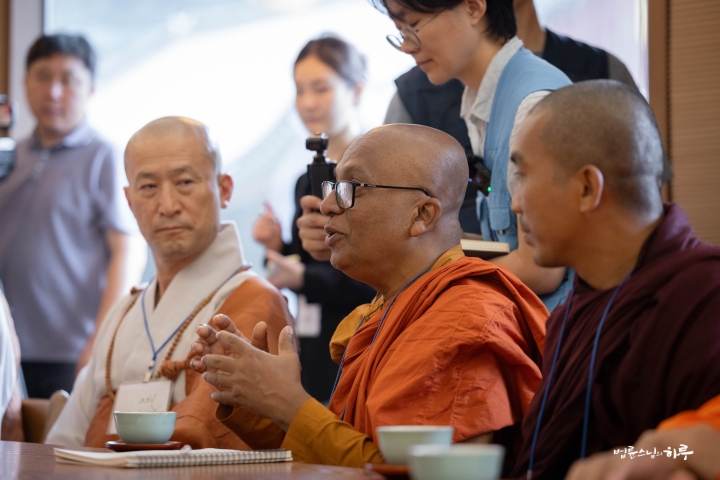
“It is an honor to meet the Executive Chief in person today. We are all monks actively working in our respective local communities. This gathering is a very precious opportunity for us. If we hadn’t come here, we would have continued our activities with a narrow perspective within our small communities, but through this visit, we can broaden our horizons and return to work even more diligently. I also heard that the Buddha’s relics, which were delivered by Venerable Dhammapala from Sri Lanka, are enshrined at Jogyesa Temple. It was a great honor to be able to pay respects personally. Thank you for giving us this opportunity.”
Looking forward to continued vibrant exchanges between Korean Buddhism and Southeast Asian Buddhism, everyone took a commemorative photo together.

After expressing gratitude to the Executive Chief for making time for them, they moved to the second floor of the Jogyesa Education and Culture Center for a discussion on “The Operation and Future Vision of the Jogye Order of Korean Buddhism.”
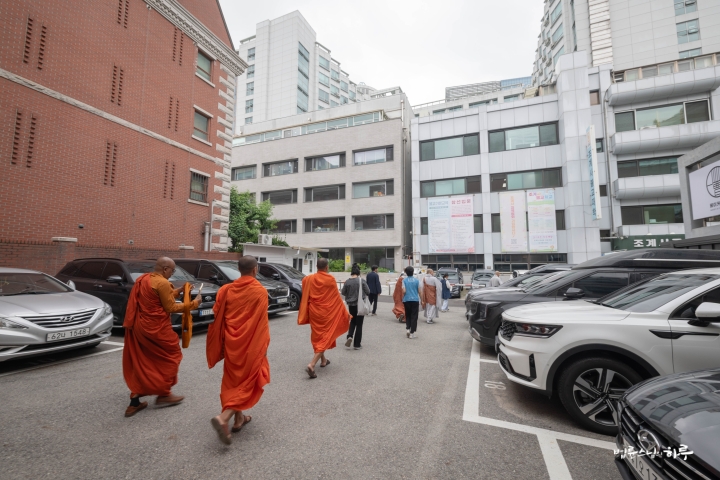
First, Venerable Seongwon, Secretary General of the Jogye Order’s Future Division, gave a keynote presentation.
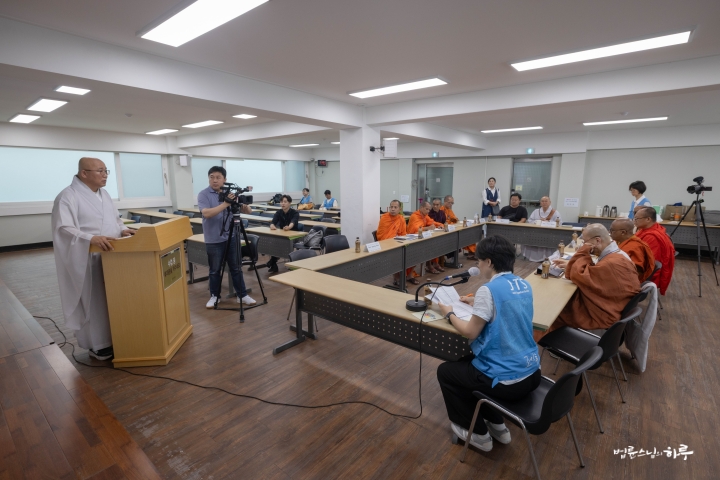
“The Jogye Order is a representative Buddhist order that inherits 1,700 years of Korean Buddhist tradition. Based on the Buddha’s teachings and centered on Ganhwa Seon practice, it continues the tradition of comprehensive Buddhism. With over 3,000 temples nationwide and about 13,000 monks, the Jogye Order strives to convey the unique values of Buddhism to modern society through cultural heritage preservation and temple stay programs.
As our future vision, we present ‘Trusted Buddhism, Respected Buddhism, and Buddhism Together.’ To achieve this, we communicate with modern people through the Seon meditation propagation movement, develop Buddhist content using AI and digital technology, and strengthen institutional changes and youth communication to respond to the crisis of declining ordinations. Furthermore, based on the spirit of benefiting oneself and others practiced by the fourfold assembly, we aim for communal Buddhism where everyone grows together.”
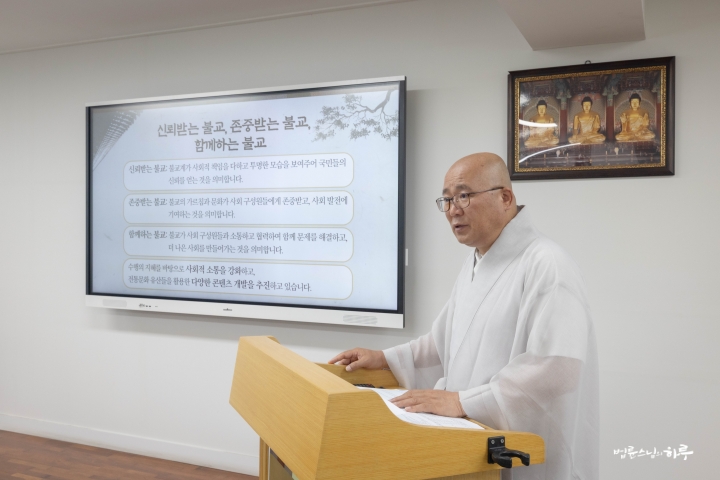
The INEB participant monks then asked various questions about the operation of the Jogye Order. The first question was about the decline in ordinations, a problem faced by the global Buddhist community. Venerable Sobichia asked what measures the Jogye Order has in place as the number of ordinands continues to decrease.
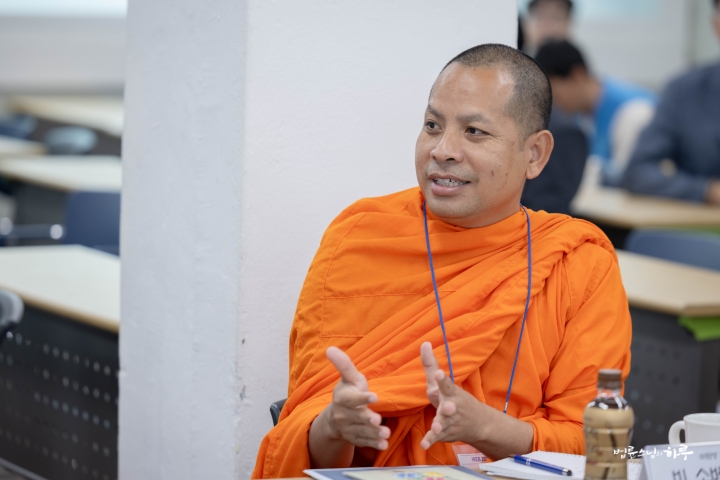
In response, Venerable Seongwon answered that Korea is also experiencing the crisis of declining ordinations and aging, and to overcome this, they are strengthening communication with younger generations. He explained that they are approaching Buddhism through exhibitions and cultural activities to make it feel more familiar and trendy to young people, and they are considering institutional flexibility to accommodate highly educated individuals or those who wish to ordain in middle age. Regarding the decline in female ordinations, he explained that as women’s status has improved throughout Korean society and their independence has strengthened, the appeal of celibate ordination has decreased.
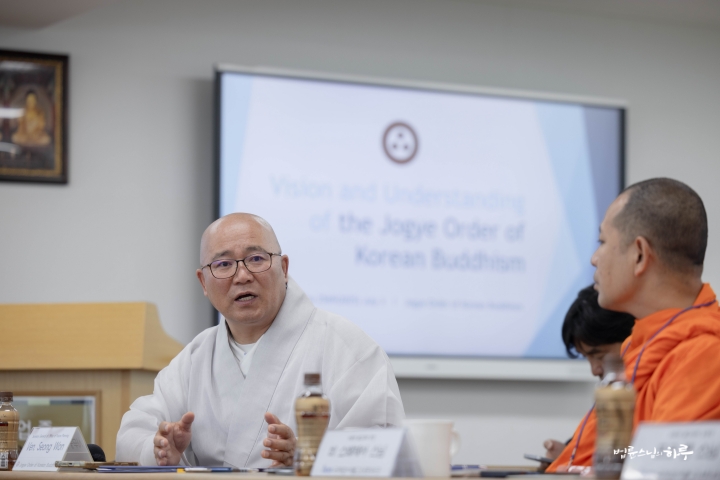
Venerable Kongshin suggested that in the reality of declining numbers of bhikkhus and bhikkhunis, there might be a need to give certain recognition or roles to lay practitioners with deep practice experience. He mentioned that in Thailand, they sometimes call lay practitioners by names like “Sotapanna,” and suggested that Korean Buddhism also needs to consider this. Venerable Seongwon explained that “Korean Buddhists tend to highly respect monastics and perceive them as being on a different level from themselves,” and emphasized that “it is important for the fourfold assembly to harmonize equally based on trust.” He particularly noted that the suggestion about the status of lay practitioners was very meaningful and that he would deeply consider it.
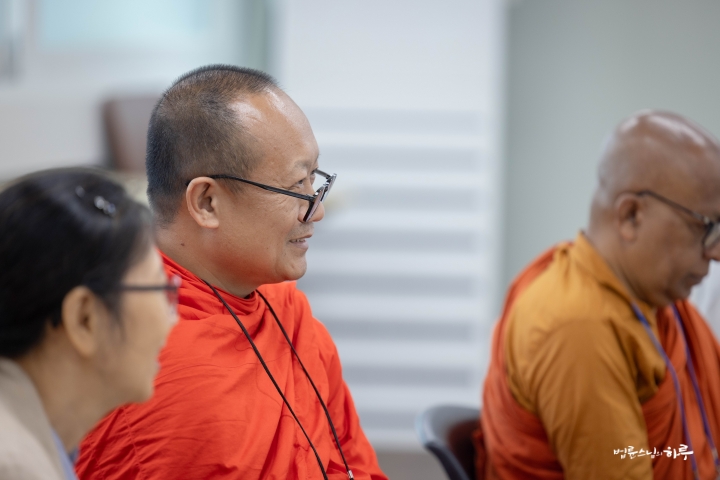
Venerable Sobichia asked whether Korea has a Buddhist education system from elementary to higher education like Cambodia. Venerable Seongwon responded that “in Korea, monastic education takes place through a four-year basic education course after ordination.” He added that while various educational paths exist, including traditional monastic colleges, the Buddhist Studies Department at Dongguk University, Joong-Ang Sangha University, and basic Seon centers specialized in meditation, there is also the challenge of lack of uniformity as each has different educational content. He also explained that even novices who ordained in childhood must pass the high school equivalency exam to be recognized as official monks.
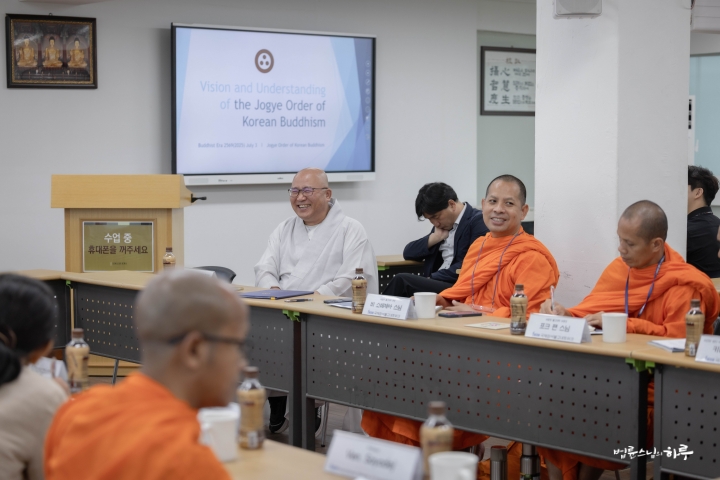
Venerable Dhammananda asked about the welfare system for elderly monks. Venerable Seongwon explained that while individual temples used to be responsible for welfare, now the national welfare system and central order-level welfare support work in parallel. He reported that the 25 district head temples nationwide are also preparing various support measures for elderly monks, and the establishment of hospitals exclusively for monks is also in progress.
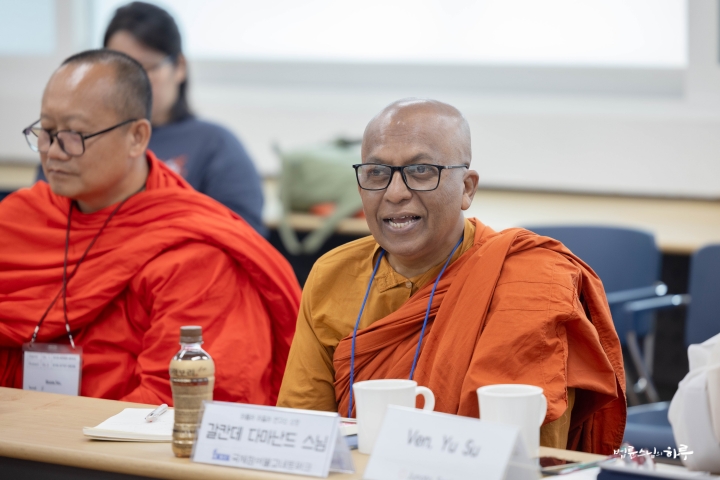
INEB Secretary General Moo asked if the Jogye Order has any agenda items they would like to collaborate on with INEB. Venerable Seongwon emphasized the need for joint cooperation on global issues such as the decline in ordinations, natural disaster response, and inter-religious conflict resolution, and proposed follow-up dialogue.
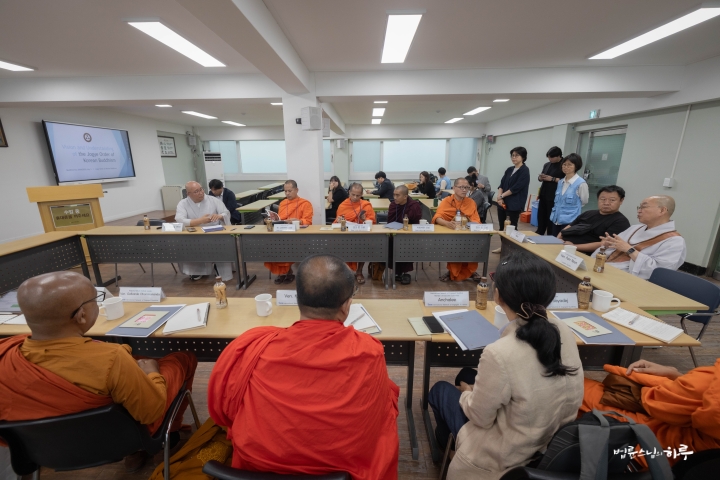
Venerable Prawin asked how Buddhism is being propagated throughout Korean society. Venerable Seongwon explained that “while the religious population has decreased to below 50%, recently the favorability index for Buddhism has nearly doubled,” and this is the result of efforts to create trendy Buddhism. He emphasized that activities that instill positive images in younger generations are the key to Buddhist revival.
After an hour of Q&A, Sunim gave concluding remarks.
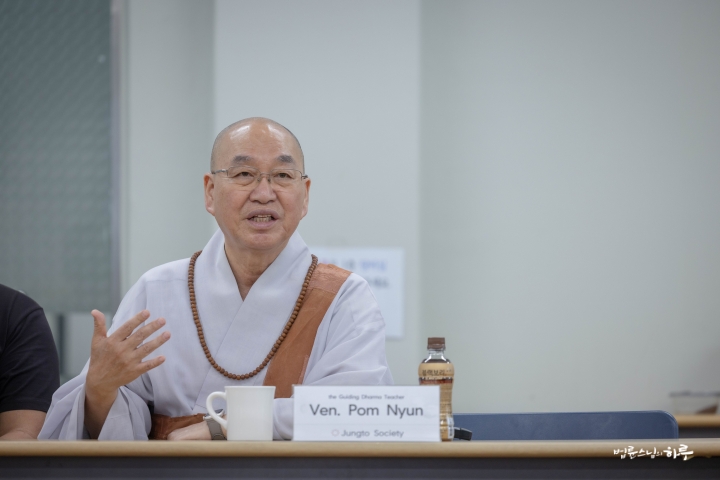
“The Jogye Order, as the representative order of Korean Buddhism, preserves traditional culture well. Recently, it has been conducting various activities that give new hope to young people. As a result, it has played a major role in creating an atmosphere where the Korean people view Buddhism favorably compared to other religions, even if they don’t become Buddhist believers.
Maintaining tradition while harmonizing with the problems of modern society is a major task and challenge for the Jogye Order. This is probably the same problem you all face. For that reason, today we showed you what kind of awareness and vision the Jogye Order, which has preserved tradition, is working with. I sincerely thank the Secretary General of the Jogye Order’s Future Division for giving today’s presentation.”
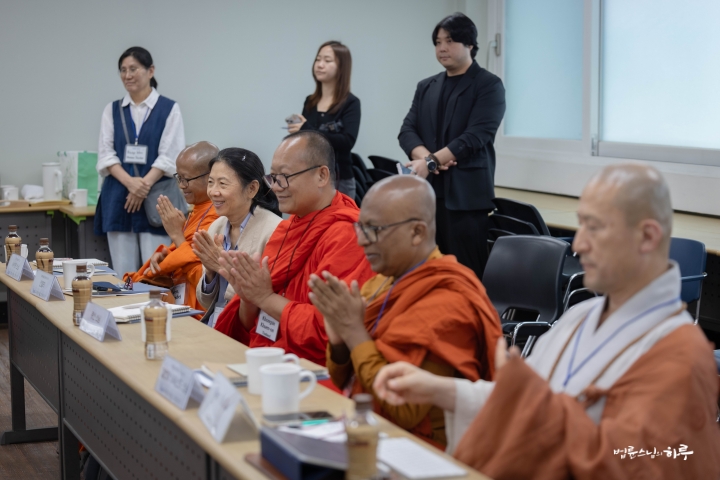
It was a meaningful time to share the reality and challenges of Korean Buddhism and explore future possibilities together. Although times and regions differ, it was a gathering where one could feel that the heart to spread the Dharma is one.
Leaving the Jogyesa Education and Culture Center, everyone took a commemorative photo together in front of Jogyesa Temple’s Main Hall.

After expressing gratitude to Venerable Seongwon for the detailed explanation, Sunim asked for the understanding of the INEB participant monks.
“Please enjoy your lunch, visit Gyeongbokgung Palace, buy souvenirs in Insadong, and spend your time leisurely. I’ll go ahead first.”
Sunim headed to the Jungto Social and Cultural Center. The INEB participant monks, guided by volunteers, toured Gyeongbokgung Palace, purchased souvenirs in Insadong, and spent the afternoon exploring traditional attractions in the city center.
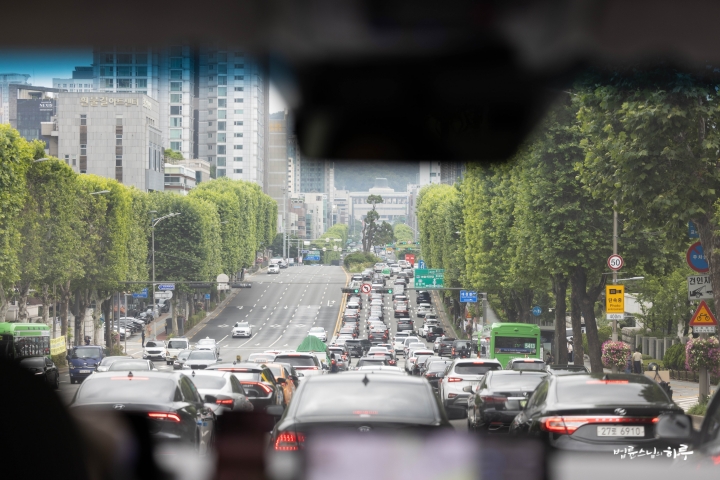
As the sun set and 7 PM arrived, everyone gathered again in the 9th floor auditorium of the Jungto Social and Cultural Center. After conducting evening prayers together in the Theravada style, they began their dialogue.
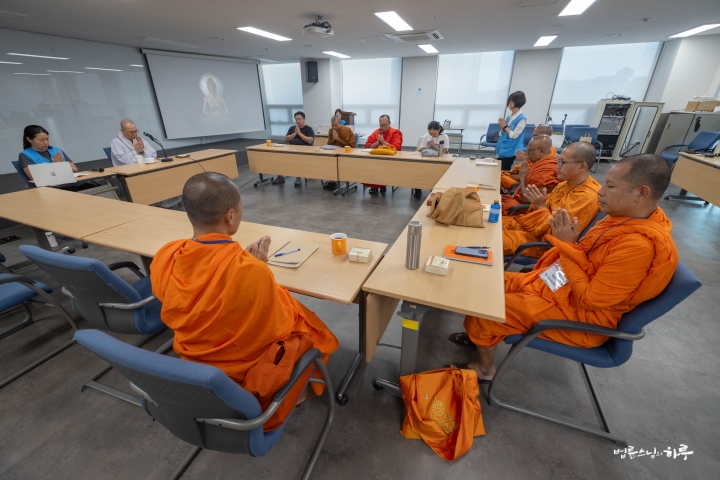
Sunim greeted them with a smile.
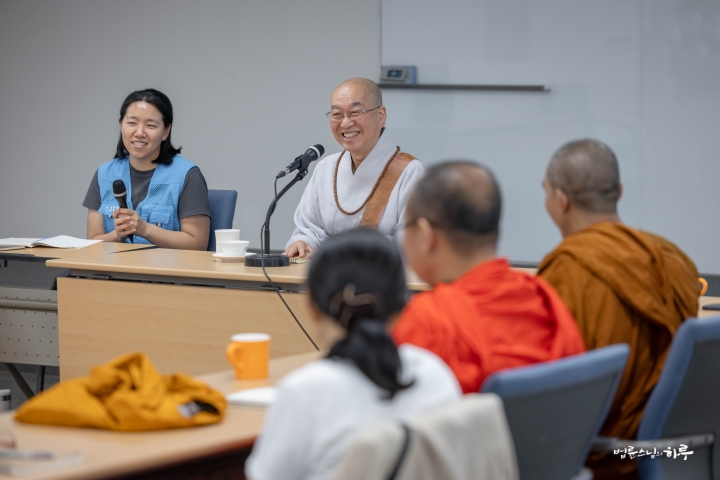
“You visited Jogyesa Temple, toured Gyeongbokgung Palace, and went to Insadong, right? Fortunately, it was cloudy today, so the weather was less hot. Now it feels like you’re really in Korea, doesn’t it?”
“Yes.”
Continuing from yesterday, they carried on their dialogue with the theme of “How shall we cooperate with each other?” Venerable Kittisara, Venerable Sayadejee, Venerable Dhammananda, and Venerable Prawin each presented three things they would do over the next three years, and Sunim gave advice on these.
First, Venerable Kittisara from Myanmar announced that the three major tasks were “rebuilding Buddhist schools, education for monks and village leaders, and Buddhist textbook production and teacher training.”
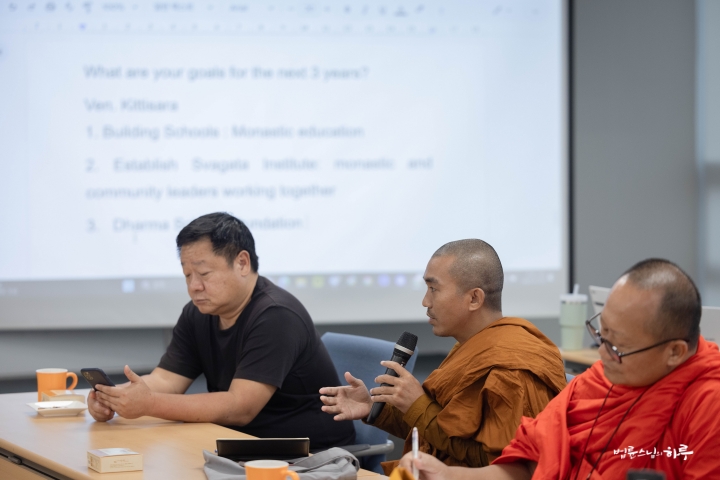
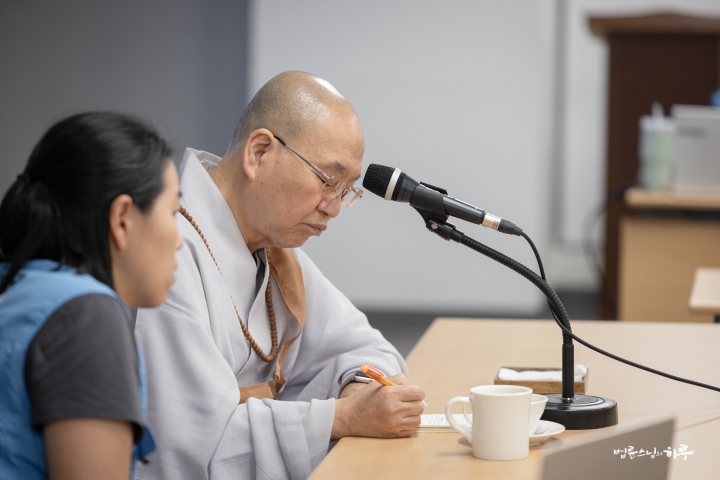
After listening to Venerable Kittisara’s detailed explanation, Sunim gave his advice.
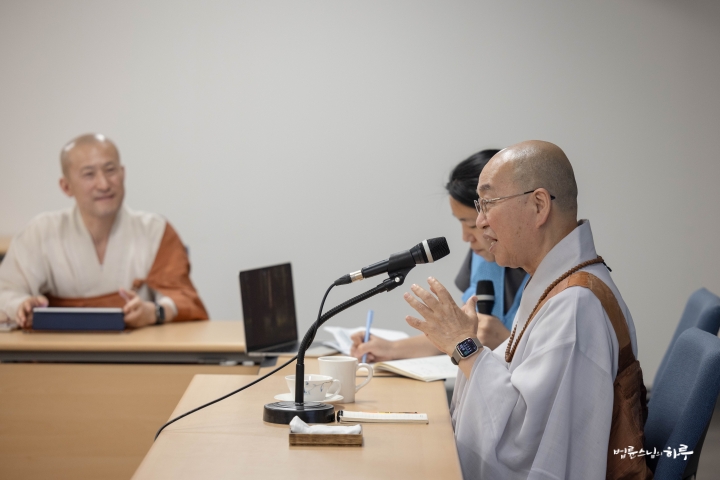
“Due to language barriers and cultural differences, it seems difficult for me to fully understand Venerable Kittisara’s situation. However, my impression is that there seem to be too many things to do in his mind. To put it in secular terms, he has ‘too much ambition for work.’ When there are so many things to do – this needs to be done, that needs to be done – it becomes difficult to make proper plans and proceed systematically.
Why Is It Difficult to Execute Despite Having Many Plans?
To accomplish any task, funding is needed first. However, it’s difficult to suddenly secure the amount of funding we desire. We also need people to work with, but finding the right people is not easy either. We live within such limited conditions. Therefore, we need to plan more specifically and meticulously about how to work effectively within these constraints and what should be prioritized. Only then can work work proceed stably and progress can be made.
In Korea too, when I observe how monks typically work, they often start projects without proper planning. In my opinion, it would be good to reduce the scale of projects a bit and establish a system to evaluate results. This way, we can assess whether projects are proceeding according to plan or not. However, the current plans are too extensive, making it difficult to offer advice. I want to emphasize that to carry out future activities, the way of thinking needs to become clearer.
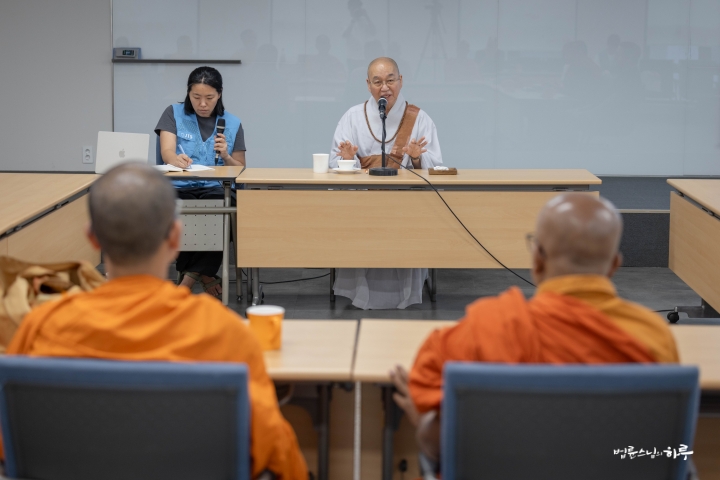
Plan Specifically, Execute Boldly
Second, it’s important to actually implement your plans. You can’t just think about them. Whether you fail or succeed, you must try. Failure is not a bad thing. This is because the process of thinking ‘This method doesn’t work. Then what should I do? Let’s try this next time!’ is the path to success. Only through actual implementation can new ideas emerge and development occur. If you just think without action, there’s no progress.
However, if you execute without any plan, it’s difficult to learn lessons. You need to make some plans before executing, so that when you fail, you can understand what went wrong. Only then can you advance to the next stage.”
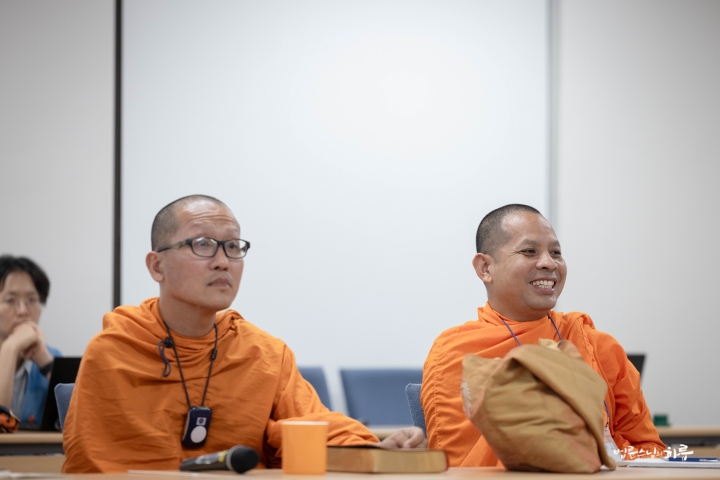
Next, Venerable Sayadejee from Laos presented three plans: ‘establishing an international Buddhist studies bachelor’s program within the Sangha University, providing Pali and Buddhist education for monks and novices in temples, and improving library and computer room facilities.’
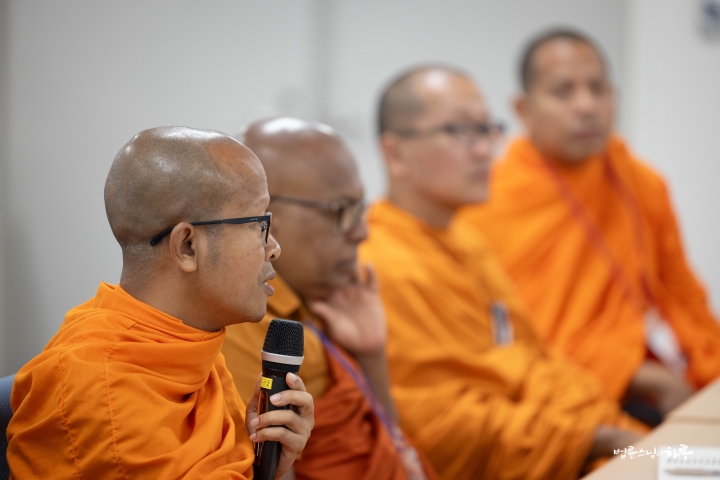
After listening to the presentation, Sunim pointed out that since Venerable Sayadejee is affiliated with a national university, securing a budget through consultation with the religious order or government should be the priority. He added that if it’s difficult to gain interest from the government or religious order, it would be necessary to prepare more specific plans to receive external support.
Venerable Dhammananda from Sri Lanka presented three plans: ‘developing advanced practice education courses for adults, planning experience-centered programs for children aged 10-15, and establishing a model temple that serves an alternative role in Sri Lanka.’
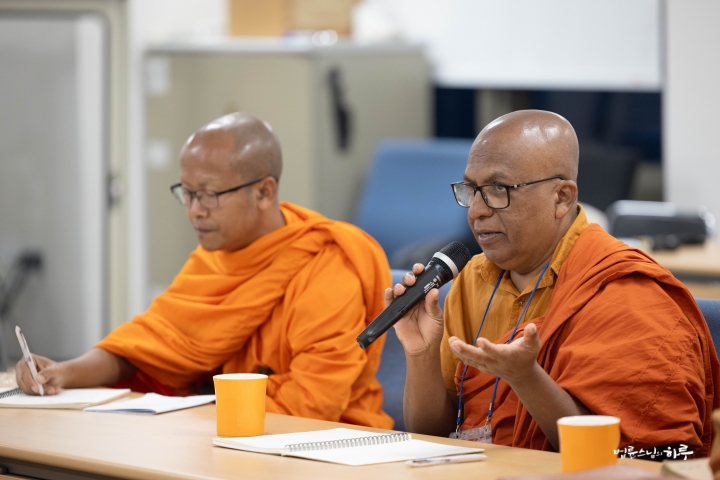
In response, Sunim pointed out that at the research institute run by Venerable Dhammananda, it would be necessary to research with scholars how to properly understand Buddhism and practice it in accordance with the times, and then verify this content by teaching it directly to people. He also added that for children’s education, it would be better to focus on creating good memories through experience rather than education.

Venerable Prawin from Thailand presented three tasks: ‘establishing an international Buddha Park as a sustainable practice space that protects the environment, publishing Dharma content using digital platforms, and establishing a Thai Buddhist school to conduct Buddhist workshops.’
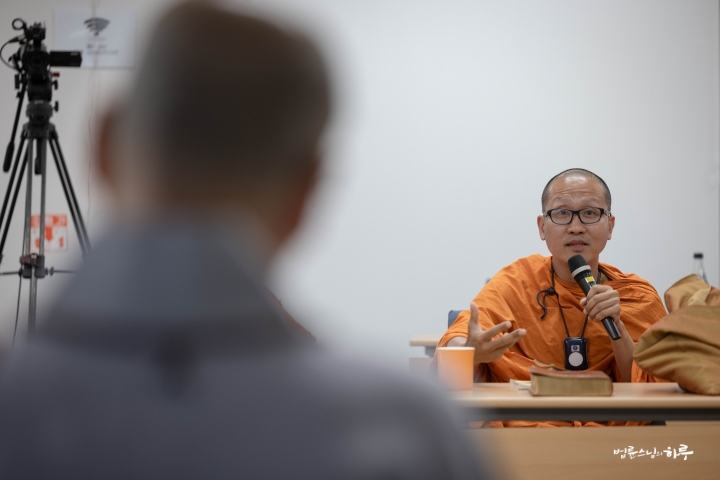
After two hours of dialogue, Sunim gave his closing remarks.
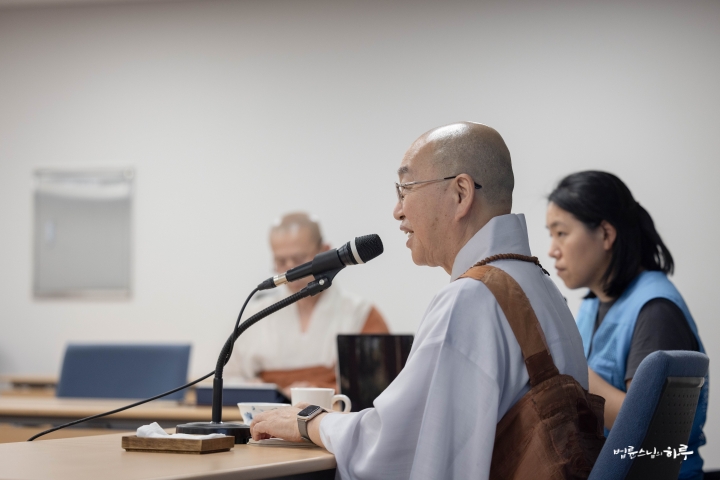
“The reason I’ve listened to your stories in detail for such a long time is because I plan to visit your locations in person within the next three years. Since the end of the COVID pandemic, I’ve been visiting all the regions of those who have visited Jungto Society in the past, as I can contact them. This is because I can better judge how to help by seeing the actual environment where they live. I may have spoken somewhat strongly in some parts, so please understand generously. Especially Venerable Kittisara, I apologize for speaking so strongly. (laughter)
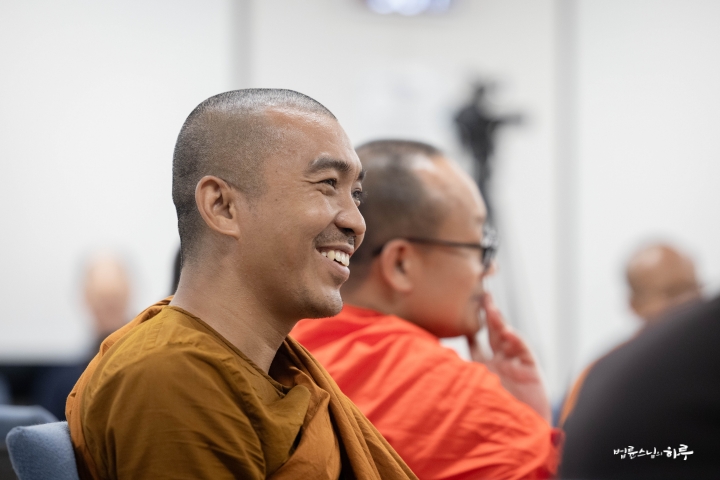
For the development of Buddhism, the era of responding separately by country or denomination—such as Theravada, Mahayana, Seon Buddhism, Thailand, or Korea—has already passed. Perhaps it will be challenging even if we all join forces. That’s why I believe we need a space where we can meet frequently to discuss. Although it’s not certain yet, we are continuing to look for a suitable location near Bangkok.”
After hearing Sunim’s story, Venerable Prawin from Thailand said he would like to donate land.
“I have land in Thailand, so you’re welcome to visit when you have the opportunity.”
“Thank you. I will visit sometime.”
After finishing the conversation, it was past 9 PM.
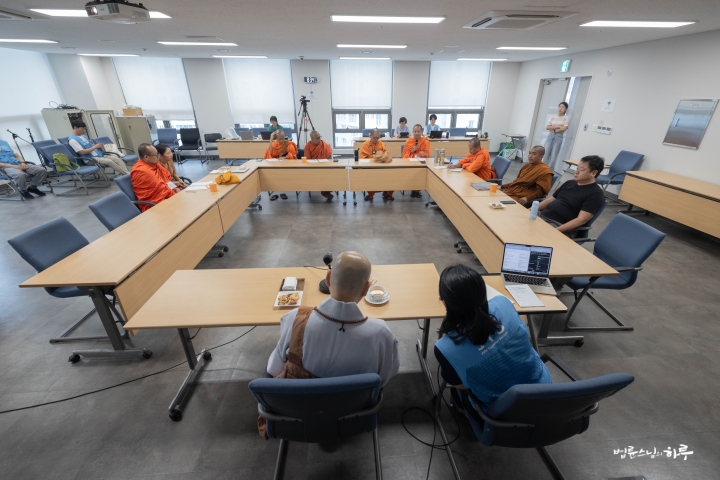
The INEB participant monks had a mindful sharing session reflecting on the day before concluding today’s schedule.
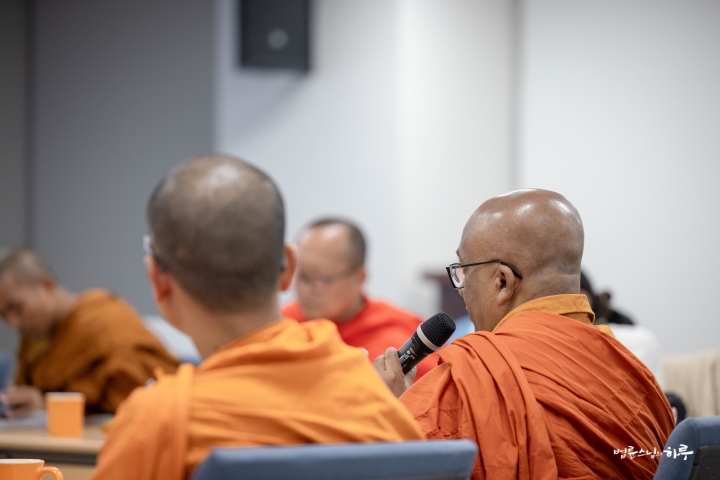
Tomorrow is the ninth and final day of the INEB study tour. In the morning, participants will write their reflections and then present them. In the afternoon, they will have additional discussions on the topic of “How can we cooperate with each other?” before concluding the entire INEB study tour.



